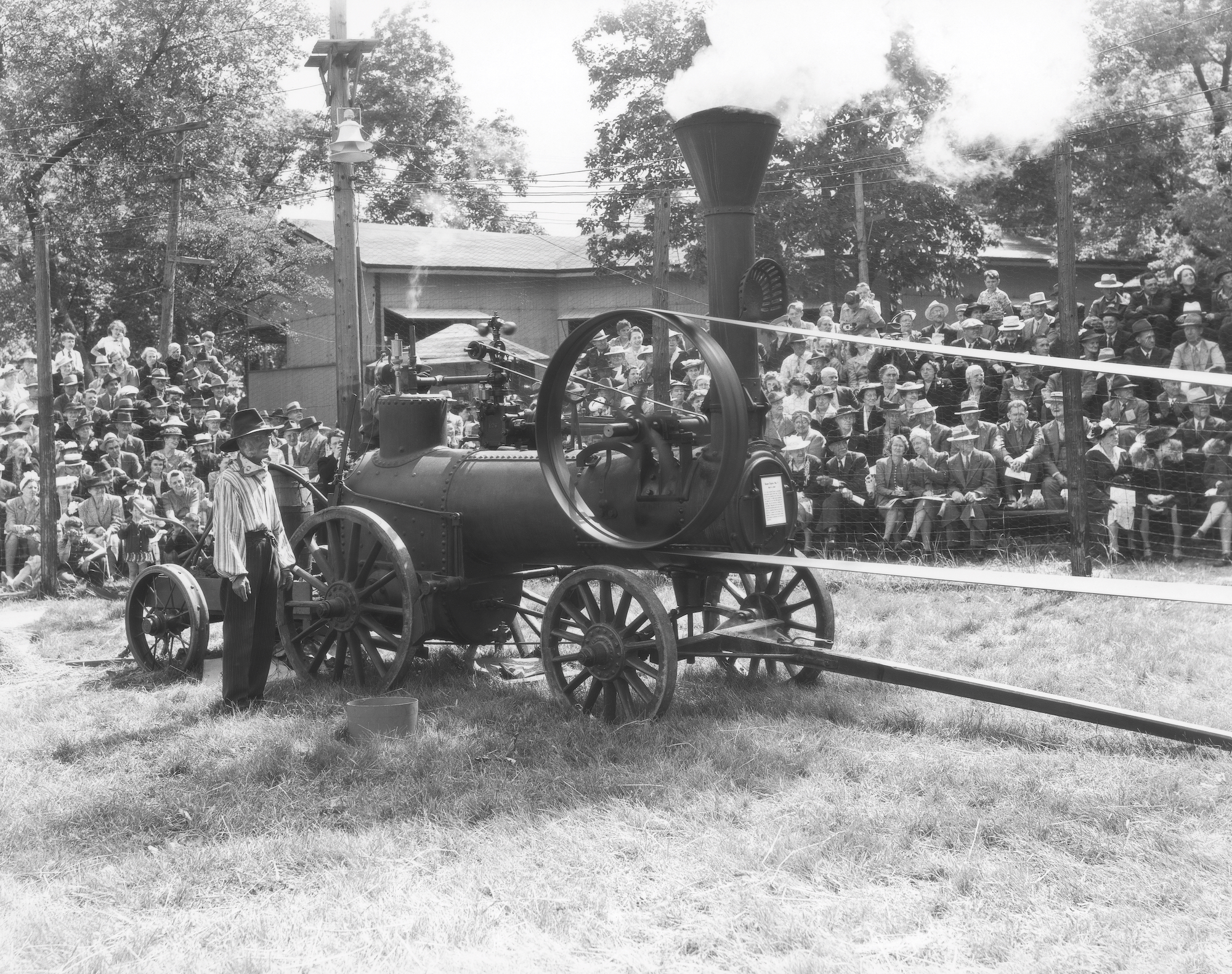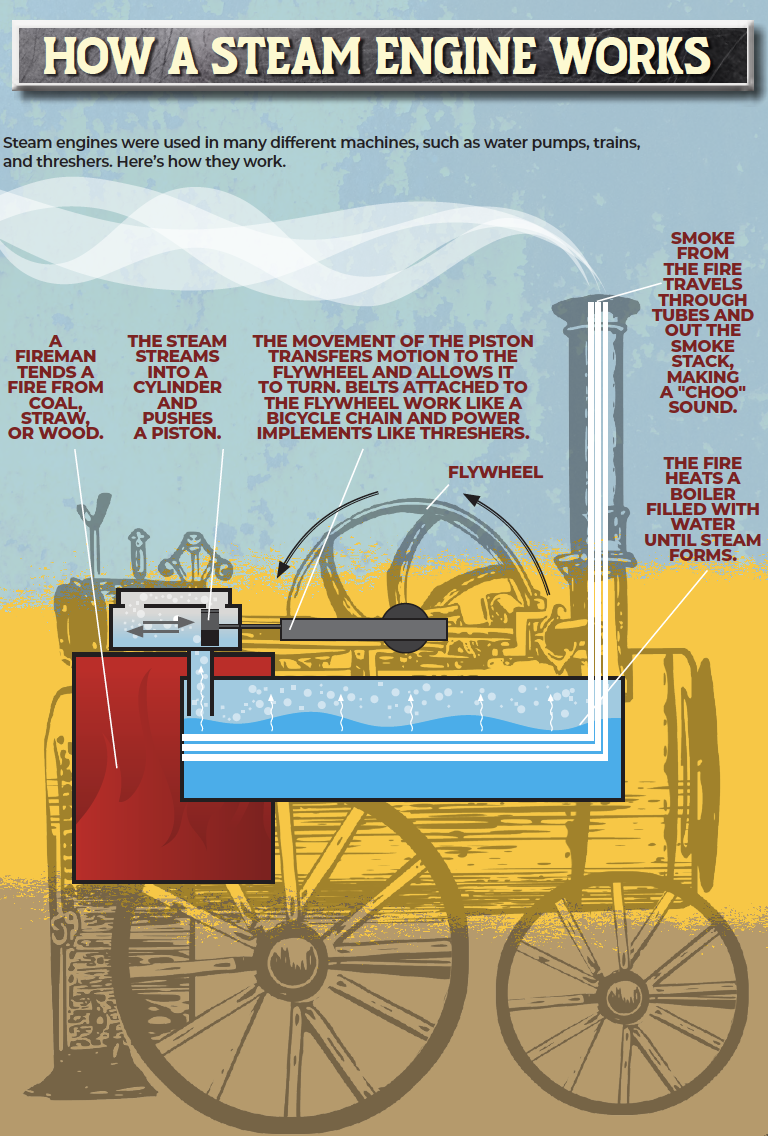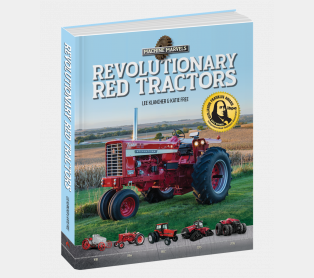Grain Crusher

The following excerpt is from Revolutionary Red Tractors, an ideal book for young readers fascinated with machinery as well as for anyone who wants to learn more about the hardworking people and the machines that feed our world! In this excerpt, it is the year 1869 and the town is buzzing over the new steam engine that will power the thresher!
William has grown up and has six children of his own, including a 14-year-old named Henry. Hearing about the Homestead Act, William moves his family to Nebraska. They pack up everything they can in a covered wagon and trek to the new state.
At their new homestead, Henry helps his father and the rest of their family on the farm. This morning, he’s woken up early because it’s his favorite day. Today is the threshing bee!
A team of men will arrive with a big machine that will thresh the wheat. Threshing separates the edible grain from the rest of the plant. Before these machines, farmers threshed grain by beating it with a tool called a flail. It was back-breaking work that took a long time—about an hour to thresh one bushel of wheat! Some farmers used mules and oxen to stomp on the stalks and separate the grains. Now threshing machines can do the job. Farmers used a team of horses to power the thresher. The horses walked in a circle and pushed a wheel that moved belts. In turn, the belts powered the thresher.

Farming families gather for the threshing bee: the whole town comes together to help with the harvest. The threshermen work all day, but after they’re finished there will be a big celebration. Walsh County Historical Museum
Henry’s family and other neighboring farmers prepare for the threshermen’s arrival. More than a dozen men must work with the thresher. Everyone helps at the threshing bee. Henry’s mother and sisters have cooked a feast of fried chicken, mashed potatoes, beans, bread, and pies for all the helpers. When he was younger, Henry carried snacks and drinks to the workers in the fields. But now he is old enough to scoop bundles of wheat into the thresher. He must be careful at this new job. He’s heard about other boys who lost their arm after getting it caught in the feeder. After the work is done, everyone will dance and party!
Threshers were expensive for a single farmer to buy. A single machine could thresh 300 bushels in a day—much more grain than one farm grew. So, threshing crews traveled from place to place and rented out their services to neighboring farmers.

Before steam engines and gas engines, horses powered threshing machines. Here, three horses walk in a circle to power a threshing machine. The movement powers the wheels and gears on the thresher. Dictionnaire encyclopédique et biographique de l’industrie et des arts industriels 1881
But this year is different. Instead of horses, a steam engine will power the threshing machine. Henry can’t wait to see it! He’s heard that they are very loud. The neighboring families have been talking about the steam engine’s arrival for weeks.
This steam engine is called “Old No. 1” and was invented by a man named Jerome Increase Case. J. I. Case was born in the state of New York but left for Wisconsin to become a thresherman. He started building threshing machines that were powered by teams of horses. But then, in 1869, Case built an 8-horsepower steam engine that could be pulled from farm to farm by horses. The smoke stack folded down and had a seat where the driver sat and controlled a team of horses. Old No. 1 paved the way for other machines on the farm.

A man demonstrates the J. I. Case Old No. 1 steam engine to a large crowd. Case IH

Check out Revolutionary Red Tractors for more!


